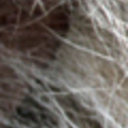Cage Based Crystalline Covalent Organic Frameworks.
Ключові слова
Анотація
The first two cage based crystalline covalent organic frameworks, cage-COF-1 and cage-COF-2, were constructed from a prism-like three-aldehyde-containing molecular cage. The cage contains two horizontal phloroglucinol and three vertical triazine moieties forming three identical V-shaped cavities. By reacting with p-phenylenediamine and 4,4'-biphenyldiamine, the two cage-COFs were formed with a hexagonal skeleton and possess a unique structure. Due to the pillared cage nodes, the linkers are hanging with their π-surfaces but not C-H sites exposed to the pore, and enjoy certain rotational dynamics as suggested by 13C CP/MAS NMR. The antidirection of the diimine linkages leads to rippled layers which pack in unique ABC mode through alternate stacking of the cage twosided faces in both AB and AC layers. Such packing forms trigonal channels along c axis which are interconnected in ab plane due to the large open space created across the hanging linkers, resembling the porous characteristics of 3D COFs. The cage-COFs have a permanent porosity and can adsorb CO2 facilitated by the intrinsic cage cavities that serve as prime adsorption sites. The unprecedented cage-COFs not only merge the borderline of 2D and 3D COFs but also bridge porous organic cages to extended crystalline organic frameworks.


